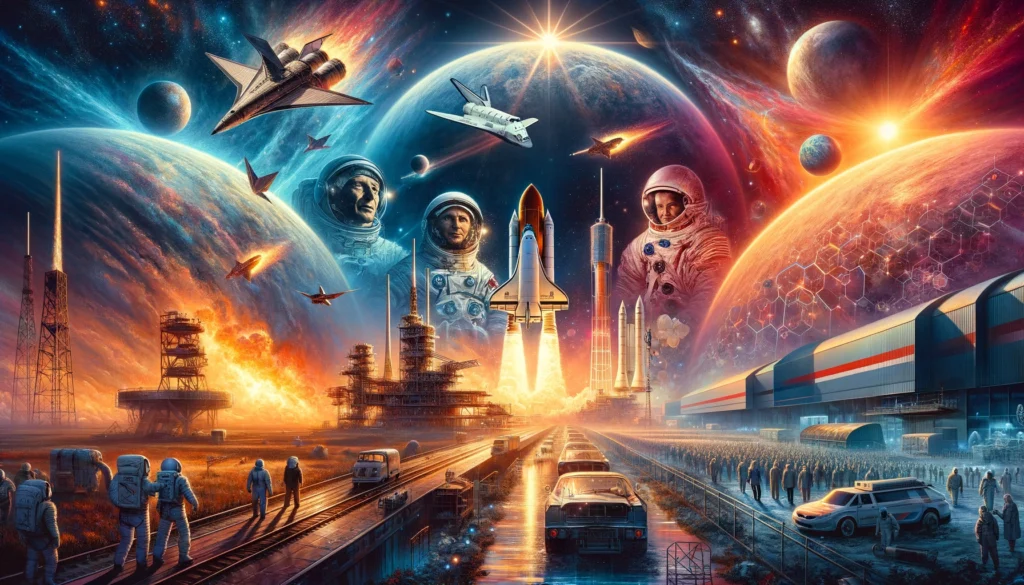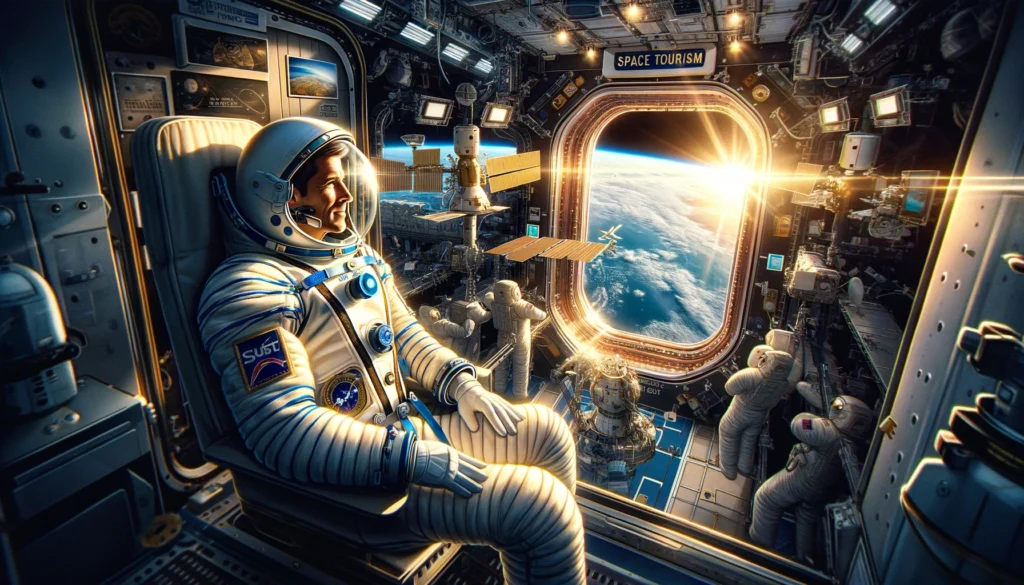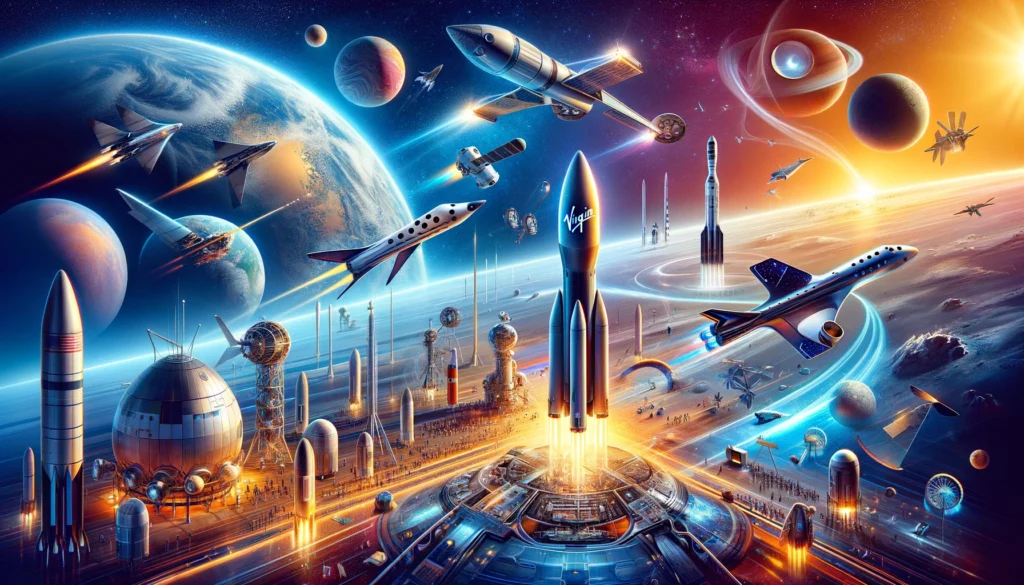Welcome to the fourth part of our Blog Series – “Space Tourism: From Dreams to Reality”.
As we continue our exploration of space tourism in this series, we venture into its historical roots and gaze toward its promising future. Space tourism, once a concept confined to the pages of science fiction, has begun transitioning into a tangible reality, offering new realms of exploration and opportunity.
A Leap Through History
The journey of space tourism began long before the first rockets were launched. Traveling beyond Earth’s atmosphere has fascinated humans for centuries, evolving from mere fantasy to a serious scientific pursuit. However, this dream started to take shape in the late 20th century, thanks to the pioneering efforts of scientists, engineers, and visionaries who believed in making the impossible possible.
- Pioneers of Space: The Early Years
The narrative of space tourism can’t be told without mentioning the first historic moments of human spaceflight, which laid the groundwork for all future endeavors into the cosmos. The journey into the cosmos began with the historic launch of Yuri Gagarin aboard Vostok 1 in 1961, marking humanity’s first venture into space. This monumental event was not just a victory in the space race but a beacon of possibility, signaling the dawn of an era where humans could transcend earthly bounds. Following Gagarin, the Apollo missions of NASA (National Aeronautics and Space Administration), most notably Apollo 11 in 1969, further expanded our horizons by landing the first humans on the Moon.

These early feats of space exploration served as the bedrock upon which the concept of space tourism was built. These early steps into space were followed by the development of the Space Shuttle program by NASA (the National Aeronautics and Space Administration), which introduced the concept of reusable spacecraft, hinting at the potential for more accessible space travel.
- The Dawn of Commercial Spaceflight
The turning point for space tourism came in the early 2000s, marking the transition from government-exclusive space exploration to private-sector involvement. Companies like SpaceX (founded by Elon Musk to reduce space transportation costs), Virgin Galactic (established by Sir Richard Branson to develop commercial spacecraft), and Blue Origin (created by Jeff Bezos to make space travel more accessible) began to emerge, driven by the vision of commercial space travel.

These companies believed in a future where space tourism wasn’t reserved for astronauts alone but was accessible to anyone with the dream of looking down upon Earth from the vastness of space. Their relentless pursuit of innovation has been instrumental in turning the tide, making space tourism a tangible reality for the broader public. As we stand today, on the cusp of a new era, the journey of space tourism from a lofty dream to a viable industry illustrates the boundless potential of human ingenuity and the relentless pursuit of exploration.
- Dennis Tito: The First Space Tourist
As the world’s first space tourist, Dennis Tito, an American engineer and multimillionaire, carved his name into the annals of space and tourism history. In April 2001, Tito fulfilled his lifelong dream through an eight-day sojourn aboard the International Space Station (ISS), brokered by the space tourism company Space Adventures with the Russian space agency. His journey was not just a personal milestone but a watershed moment for space tourism, demonstrating that space was no longer the exclusive domain of astronauts and cosmonauts.

Tito’s adventure opened the floodgates for private individuals dreaming of space, setting a precedent for consumer space travel and proving its viability to the world. His voyage served as a beacon, inspiring countless others to look towards the stars with hope and ambition, and compelling the space industry to seriously consider space tourism as a feasible future market.
The Future Awaits
Looking ahead, the future of space tourism is as vast and promising as space itself. Companies are actively developing technologies to make space travel safer, more affordable, and accessible to a wider audience. Virgin Galactic is working towards commercial suborbital flights, offering passengers a glimpse of space and weightlessness. SpaceX aims to revolutionize space travel with its Starship, designed for missions to the Moon, Mars, and beyond, potentially turning interplanetary travel into a reality. Meanwhile, Blue Origin focuses on reusable rocket technology to lower the cost of space access.

- Visions of Tomorrow: The Next Giant Leaps
Beyond these initial steps, the industry envisions orbital hotels, lunar bases, and even Mars colonies, expanding the human presence in space and making extraterrestrial tourism a part of our future. The roadmap to this future is laden with innovation and challenges. The next chapters of space tourism will likely be written with the ink of technological breakthroughs — from advancements in rocketry and spacecraft design to the development of space habitats and lunar bases.
These endeavors promise not only to expand the boundaries of human experience but also to foster a deeper connection with our home planet. As we become a species that looks inward from the outside, our perspective on Earth’s fragility and the importance of its stewardship is bound to shift. The future of space tourism holds the promise of not just new destinations but new understandings — of ourselves, our planet, and our place in the universe.

Author’s Note
As we delve into the past and future of space tourism, I aim to illuminate the path from its early conceptualizations to the upcoming era of widespread space travel. This journey not only highlights human ingenuity and ambition but also underscores the importance of pursuing these dreams responsibly and sustainably. Join us as we continue to explore the fascinating intersection of exploration, technology, and human aspiration.
G.C., Ecosociosphere contributor.
References and Further Reading:
- “The High Frontier: Human Colonies in Space” by Gerard K. O’Neill
- “Space tourism: Its history, future and importance” by Derek Webber
- “The Case for Space: How the Revolution in Spaceflight Opens Up a Future of Limitless Possibility” by Robert Zubrin
- “Rocket Men: The Daring Odyssey of Apollo 8 and the Astronauts Who Made Man’s First Journey to the Moon” by Robert Kurson





Comments
Your point of view caught my eye and was very interesting. Thanks. I have a question for you.
Your article helped me a lot, is there any more related content? Thanks!
Thanks for sharing. I read many of your blog posts, cool, your blog is very good.
Thanks for sharing. I read many of your blog posts, cool, your blog is very good.